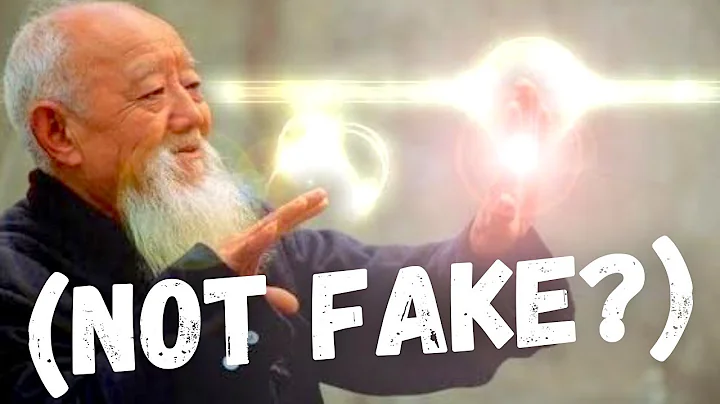Badminton singles footwork general rules and three-point rules, under the premise of maintaining the center of gravity, so that the center of gravity displacement is minimized!
First, I put the simplified conclusions first, and the explanation of these conclusions will be expanded later. The general principles and three principles here can be regarded as the total decision of the inner gong mental method.
General rules:
The purpose of the basic footwork of singles is to minimize the displacement of the center of gravity while maintaining a stable center of gravity.
Rules:
1. Stride principle: minimize the number of steps and maximize the stride length;
2. Start principle: must start, first slightly lower the center of gravity;
3. Positioning principle: gives priority to defending against straight shots and slash lobs;

Badminton singles footwork-general rules:
We will take lindane as an example below Let me explain to you the general rules and the rule of thirds. As mentioned above, the purpose of the singles' basic footwork is to minimize the displacement of the center of gravity while maintaining a stable center of gravity. In a nutshell, this principle is to be able to reach out. For the ball, don’t move the whole body over and bend your arms enough.
Although it looks very simple, but everyone really plays the ball, not everyone can do it, here is an example of Lin Dan: forehand backcourt footwork.

From this picture we can see thatOpponent Zhou Tiancheng pressed Lin Dan to a forehand zone and tied the ball. Lin Dan did not move his whole body when returning the ball. First of all, Lin Dan's sideways were in place. He turned his body sideways and left his foot ( His right foot is very close to the center of the field, his right foot is very close to the center of the field, and his feet are connected in a straight line to point to the center.
so that his center of gravity (near the geometric center of the body) is equal to half of the field, the side of the body can easily cover the distance from the center of the field to the bottom line in length, and he can set the center of gravity as soon as possible after hitting the ball Adjust back to the center position. Secondly, Lin Dan’s wrist strength is very strong, because such a sideways shot basically cannot use the strength of other parts of the body except for the strength of the wrist and forearm. It is relying on the explosive force of the wrist. That's why it can return the ball with the maximum sideways condition, so the technique and footwork are also complementary to each other.
The reason why Lin Dan took two strides to hit the ball sideways in this way was to ensure the quality of the ball returned when the center of gravity moved from the center of the field to the back near the sideline of the field. The center of gravity is returned to the vicinity of the center to maintain the initial state to prepare for the next shot, which ensures that no flaws are generated and the opponent has the opportunity to take advantage.
Let’s look at another example:
puts the net at a low point before the forehand net

We can see that Lin Dan’s body is also similar to a sideways body, and he takes a big step with his left foot, right The foot did not follow up from behind, but kept at a position near the center of the field. His left hand stretched out to reach the low penalty kick as much as possible. In a passive situation, he did not rush to grab the high point, but returned after replaying the net. As a transition ball.
After analyzing the above two examples, we can find that if you want to ensure that the general rule requires less movement of the center of gravity, you must hit the ball sideways. Sideways are very important, because the body’s limbs are short, front and rear, and left and right. Yes, if you want to make the most of your body length and run less, you must hit the ball sideways.

Badminton singles footwork-striding principle:
striding principle,That is, the number of steps is minimized and the stride length is maximized. Generally speaking, this principle is to complete a shot. The fewer steps used, the better, the larger the total stride length, the better. , But the larger the overall stride, the better. Since I'm talking about badminton seriously, I am here to set high demands for everyone in accordance with the requirements of the national team. I hope everyone can practice in the most optimized mode.

In the footwork of badminton, from the center to the four corners, there needs to be a "start pedal + step" process, in which starting pedal is essential, this will As introduced in the start principle, the stride principle is only for striding. ignores the start kick and only talks about striding. The optimal mode for singles is:
simplifies to two strides in front of the net. Step by step, two steps backward in the field are simplified to two steps.
Here is a self-made footwork diagram for everyone: (take the right hand as a clap)

As you can see from the picture, the steps of the first two points and the next two points are both Two steps, but the first step of the first two points is smaller than the second part, and the length of the first and second parts of the latter two points is relatively small, and the left and right waists are in place in one step. We can also see Except for the head shot in the backhand zone where the right foot is first (the side holding the racket) and the left foot is second (the side not holding the racket), the rest of the routes are the left foot first (the non-holding side), and then the right. Feet (holding side).

In addition, if the first two points of the net can be done in one step, don’t do it in two steps. Pay special attention: here, pay special attention to the right backcourt shot (holding the racket side forehand), this position is also often It is done in three steps. Generally speaking, if you move in three steps, the first small step and the rotation are sometimes very close. Sometimes after the rotation, take a small step with the right foot, and then the left foot step or cross.Then he hits the ball with his right foot in a big step, which is also very smooth.

Badminton singles footwork-starting principle:
There are often golfers who feel that their footwork is correct when they are playing, and they are also working hard to follow the coach’s "" Cross step " or "parallel step", the pace is getting bigger and bigger, but the speed is always a little bit short, I am puzzled why, this happens, the big reason is not pedaling The action of shifting the center of gravity.

There is no such an action of pushing the ground between the legs. How can we quickly follow up the last two steps of the footwork? The ball is often very low when the step arrives. Because the kick is a relatively unobvious movement, some careless coaches will not talk about it, and some students don’t pay much attention to it. In fact, the kick is in the start of the footwork. It's very important, there is no stepping without turning.

Although in the logical order, the step is started only after the kick, but due to the concealment of the kick, it is easy to be overlooked, and the step is relatively obvious. After striding, let’s talk about pedaling. What is the state of pedaling? Below are six pictures of Lin Dan’s pedaling, corresponding to the six footwork lines:

【Forehand pedaling forward】

【backhand kick forward】

【forehand backfield kick】

p0
img
0 backhand
0 Left line area pedaling]

【Right line area pedaling】
The above is the pedaling of the six footwork lines.Since pedaling is a very subtle movement, static screenshots alone cannot reflect it in place, but from the above six pictures we can also see the commonality of the two pedaling.
The first point: When pedaling, the two legs will separate and support on the ground. In which direction the body goes, the opposite leg will push the ground with greater force to start the center of gravity shift.
The second point: Since the purpose of pedaling is to select a certain footwork route displacement, the two points of the two legs will be on the straight line of that route.
Last reminder: Although this action is a hidden detail action, this kicking action is very important in the footwork and is often easily overlooked by amateur golfers. You must pay more attention to it.

Badminton singles footwork-stance principle:
Finished talking about the principles of starting and striding, let’s talk about the stance principle of singles. In badminton, due to the continuous changes of the line, so Our footwork should be adjusted according to the opponent's movement, and our footwork should be adjusted according to the possibility of the opponent's return. Generally speaking, in singles, the sling will play a "square ball", that is to say. The ball hit the four corners of the opponent's court.
So it is generally divided into the left half and the right half of the ball. At this time, the opponent may return a straight ball, or the sideline may play a diagonal ball. At this time, our position must give priority to defending the straight ball. At the same time Be consciously prepared to catch the diagonal lob. The reason for the priority to defend the straight ball is that the straight line is shorter than the diagonal, so the straight line attack generally poses more threats to us than the diagonal, and the drop point is in front of the net. Two points, so a bigger step is needed to connect the diagonal line.
Singles stance principle in a nutshell:
Slightly deviate from the center to the opponent's straight line side
as shown in the figure:

ball,Position left in the middle]

[Predict the right-half return, the stance is centered to the right]
This is the basic stance principle of singles, compared to the stance principle of constant switching in doubles , The principle of singles is relatively simple, give priority to defending straight ball .

The above are the main principles of badminton singles footwork. These principles are based on my own practice and theory, as well as repeated observations of the technical models of first-class players, with a certain degree of subjectivity. But it is also easier to get started, and I hope you can communicate more after you see it.
.










